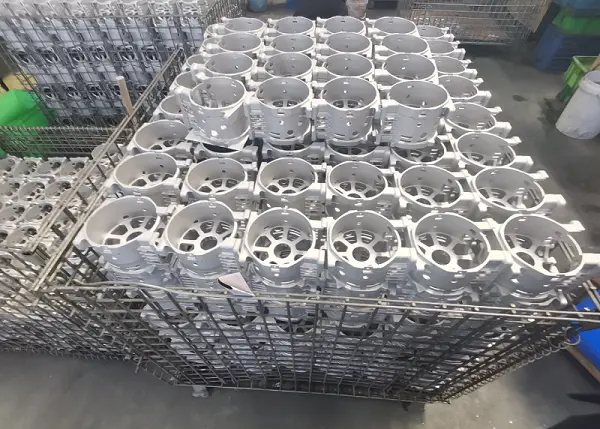
Knowledge
Technical Details of Die-casting Process

Die Casting Machines and Mold Technology
Die casting machines and mold technology are the foundation for achieving efficient and precise die casting production. Die casting machines can be classified into two major categories based on their working principles: hot chamber and cold chamber, each with its unique technical features and application scope.
Types and Technical Parameters of Die Casting Machines: The selection of die casting machines is based on the size of the clamping force, typically divided into small (160-400 tons), medium (400-1000 tons), and large (over 1000 tons) types. Cold chamber die casting machines, with their high-pressure injection capability, are suitable for producing complex and thin-walled castings, while hot chamber die casting machines, due to their rapid cycle speed, are ideal for small castings. According to the International Die Casting Association, the production efficiency of cold chamber die casting machines is approximately 30-50 pieces per minute, while that of hot chamber die casting machines can reach 150-200 pieces per minute.
Mold Design and Materials: Mold design must take into account the geometry of the casting, alloy fluidity, and solidification characteristics. High-precision mold materials such as H13 steel are widely used due to their excellent thermal stability and wear resistance. Mold design must ensure that the molten metal can uniformly fill the cavity, while also considering shrinkage rate and draft angle to facilitate the demolding of the casting. According to market research reports, molds made of H13 steel have an average lifespan of up to 1 million die casting cycles. PS: If you like this article, please follow the official account "Design Foundation".
Melting and Temperature Control
Melting and temperature control are crucial steps in the die-casting process, directly affecting the quality of the molten metal and the performance of the castings.
Alloy selection and melting temperature: Choosing the right alloy is vital for the performance of die-cast parts. For instance, the melting temperature of aluminum alloys typically ranges from 660°C to 750°C, while that of zinc alloys is between 420°C and 480°C. Precise control of the melting temperature ensures the fluidity of the molten metal and the microstructure of the castings.
Temperature control technology: Automation of temperature control through equipment and systems reduces human intervention and errors, enhancing production efficiency and product quality. For example, PLCs and related valves are used to control the temperature of the melting furnace, with separate control for heating and holding using furnace temperature control and cascade control.
Die-casting Speed and Pressure Control
Die-casting speed and pressure control are key factors determining the quality of castings, requiring precise process parameters to ensure the integrity and performance of the castings.
Injection speed and pressure: Injection speed significantly affects the quality and production efficiency of castings. High-speed injection can reduce oxidation and gas entrapment but may cause metal splashing and mold wear. In terms of pressure control, maintaining a constant pressure is crucial for ensuring complete filling of the mold cavity, with common pressure ranges from 10 to 175 MPa.
Die-casting process analysis: Detailed analysis of the die-casting process helps determine the optimal injection functions, including slow injection, first-stage rapid injection, second-stage rapid injection, and pressure holding. The proper combination of these functions can optimize the die-casting process and improve casting quality. According to industry practice, optimizing the second-stage rapid injection speed can reduce internal porosity and shrinkage defects in castings, enhancing their density.
Vigor team have rich experience on die-castings. If any question or any demands we can help, please feel free to contact us at info@castings-forging.com



